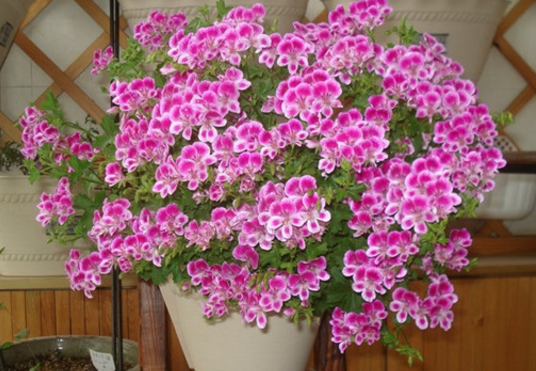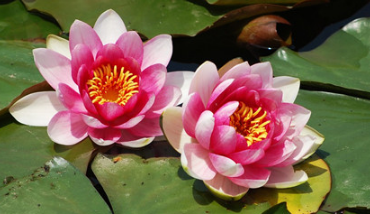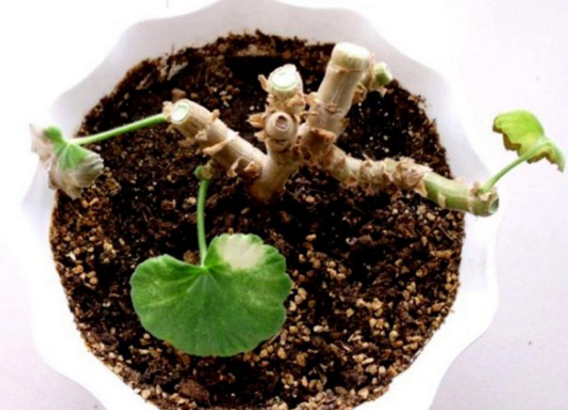Is the geranium poisonous? is it suitable for pregnant women? how to cut it correctly?
Geranium can be elegant or delicate, its posture is ever-changing and graceful, maybe you will fall in love with it at first sight. But such beautiful flowers make people wonder whether they are poisonous, because beautiful things always like to protect their amazement with weapons.

Is the geranium poisonous? is it suitable for pregnant women?
Is the geranium poisonous?
In fact, toxic and non-toxic is also divided into the situation: well raised at home, watching, its fragrance is non-toxic. But the plant itself is poisonous, it can be said that the whole geranium plant is poisonous. Accidental ingestion can lead to colic, abdominal pain, diarrhea, shortness of breath, vomiting, hematochezia and other toxic symptoms. But the editor doesn't think everyone will be so hungry that they want to eat flowers.
However, in the process of family breeding, when pruning branches, leaves and flowers, try to wear gloves, its juice contaminated the skin, will also cause redness and swelling, itching.
Who wants to stay away from geraniums?
Stay away not because geraniums are poisonous, but because of the smell of flowers. The smell of geraniums is a bit like roses and peppermint. It is not only nontoxic, but also regulates hormones, stimulates lymphatic detoxification and balances skin oil secretion. At the same time, geraniums are also a good insect repellent. Geraniums, especially geraniums, give off fragrance when touched. But for some people, it is best not to raise geraniums in families with allergic skin.
Pregnant women who have babies during pregnancy or at home are also not suitable to put geraniums, because pregnant women and babies are more sensitive and are likely to cause allergies due to geranium stimulation.
How to cut geraniums correctly
1. Cutting method of geranium.
First of all, find a few such plastic cups and put a few small holes in the bottom to facilitate water penetration.
Cut the branches of the geraniums and dry them in a cool place for a day.
Fill the plastic cup with soil and insert the branches directly into it.
After cutting, put it in a cool place with proper light.
It can take root in about half a month, and the growth of white roots can be seen through the plastic cup.
2. The pot method of geranium.
After the root system of the geranium grows thickly, you can put it on the basin and follow the steps below.
First of all, catch Xiao Miao in the way shown in the picture.
Turn upside down and the saplings go down.
Dip the whole flowerpot into the water, release your hand slightly at this time, and let the sand flow into the water along your fingers. The plant can be removed from the pot slowly, and the soil at the root is cleaned very clean.
All that's left is to transplant, squeeze the trunk of the geranium with your fingers, stand upright, and add dirt with the other hand.
All right, the transplant is successful.
Is the geranium poisonous? the breeding method of geranium
Geranium light and elegant can also be delicate and gorgeous, deeply loved by people, often placed indoors as a potted plant, playing the role of purification and decoration. So does everyone know that geraniums are poisonous? The following is going to tell you the answer and how to reproduce geraniums.
Is the geranium poisonous?
Geranium itself is non-toxic, you can rest assured to breed at home, of course, for people with allergies, its pollen is easy to cause allergic skin allergies, so avoid putting geraniums indoors. Geraniums smell a bit like roses and peppermint. They are not only non-toxic, but also regulate hormones, stimulate lymphatic detoxification and balance skin oil secretion. At the same time, geraniums are also a good insect repellent. Pregnant women during pregnancy, babies at home and other conditions are not suitable to put geraniums, because pregnant women and babies are more sensitive and are likely to cause allergies due to the stimulation of geraniums.
Propagation methods of geraniums:
1. Sowing and reproduction
It can be carried out in spring and autumn, and indoor pot sowing in spring is better. The optimum temperature for germination is 20-25 ℃. The geranium seed is not large, and the soil cover should not be deep after sowing, and it will germinate in about 2-5 days. It will sow in autumn and blossom in the summer of the following year. After sowing and propagation, excellent intermediate varieties can be selected and bred.
2. Cuttage propagation
All geraniums can be cut except that the geraniums are semi-dormant from June to July. It is better to use spring and autumn. High temperature in summer, cuttings are easy to blacken and rot. The cuttings are 10 cm long, and the top part is the best, with vigorous growth and fast rooting. After cutting the cuttings, let the cut dry for several days, form a thin film, and then insert it into the sand bed or the mixed matrix of expanded perlite and peat, be careful not to hurt the bark of the cuttings, otherwise the wound will rot easily. After insertion, put it in a semi-shaded place and keep it at room temperature for 13-18 ℃. It will take root after 14-21 days. When the root length is 3-4 cm, it can be potted. Soaking the base of cuttings with 0.01% indolebutyric acid for 2 seconds can improve the survival rate and rooting rate of cuttings. Generally, geranium cuttings blossom for 6 months, that is, cutting in January, flowering in June, cutting in October, and flowering in February to March of the following year.
Is the evergreen poisonous? can the evergreen be put in the indoor bedroom?
Now many people like to say that some flowers and plants are raised in offices and bedrooms on the balcony at home. Indeed, flowers and plants give people a vibrant state, and can add a variety of colors to the room and make people feel happy. But not all flowers and plants can be raised indoors. Evergreen is a kind of foliage plant, many people like to raise it at home, so can evergreen be cultivated indoors?
Are flowers and leaves evergreen poisonous?
But the juice of evergreen is poisonous, and the stem tissue is generally the most poisonous. In general, mucus sticking to the hands or skin will cause allergic reactions, plaques or itchy sensations, and scratches that you don't pay attention to will be even more itchy. Too much contact will make people's hair fall off, if not careful entrance, it will also be life-threatening. If you accidentally get into your eyes, you may go blind for a while. As soon as you come into contact with the juice of evergreen flowers and leaves, rinse with clean water immediately.
Can the flowers and leaves be put in the indoor bedroom?
Try not to put it in the bedroom, because big-leaf plants consume more oxygen at night, which will reduce the oxygen content in the closed room! There's no problem putting it in the living room!
Accidentally eating the branches and leaves of evergreen flowers and leaves will cause swelling and pain in the mouth, throat, esophagus, stomach and intestines, and even damage the vocal cords, making people dumb; it may also cause burns, edema and salivation in the epidermis of the lip and tongue, affecting swallowing and breathing. Symptoms can last for a few days or more than a week. Severe swelling of the mouth and tongue can cause asphyxiation. Sometimes nausea, vomiting and diarrhea should be paid attention to.
Pay special attention to the needs of children at home; do not make the juice touch the skin during the cutting operation, and pay more attention not to touch the entrance, otherwise it will cause skin itching, pain or other toxic phenomena, and wash your hands with soap after operation.
Maintenance skills of evergreen flowers and leaves
1. Watering
Scientifically watered flowers and leaves are always in a high-humidity environment, and the pot soil overwintering in winter should be dry and wet, not too dry. If the basin soil is too dry, the leaf tip will be yellow and scorched, withered, and even the whole plant will wither. The main reason is that the root system can not absorb water. Therefore, it is necessary to keep the air moist and the basin soil moist in winter. Generally, it is appropriate to water once a week, and it is necessary to wash the leaves with warm water to keep the leaves bright.
2. Temperature and light
The flowers and leaves are always hot and afraid of cold, and they will move indoors for the winter in October. The temperature should be kept at about 15 ℃. Adequate light and good ventilation are required. When the temperature is lower than 10 ℃ or too wet, the leaves often fall, or even the top of the stem fades; too weak light will cause the leaves to fade. Usually use a soft cloth to scrub the leaves to remove dust and increase ornamental.
3. Fertilization method
Fertilization is usually applied once a month during the growing period of evergreen leaves, especially nitrogen fertilizer, which can promote its rapid growth. Fertilizer and water are applied every two weeks from March to August, and fertilization is reduced after autumn.
Which flowers and plants should not be planted indoors
1. Tianbao flower
Tianbao flower is a white lotion secreted that can make people drowsy and even toxic, especially if there is a pregnant woman at home, it is not suitable to plant this flower, it can cause abnormal fetal sound and affect fetal development. Although this flower is beautiful, our bodies don't seem to like it very much, so it is not recommended to plant it indoors.
2. Mimosa
I believe that friends who have planted mimosa know that this is a very lovely and fun plant, especially children like to tease it. But in fact, the mimosa in mimosa is a highly toxic organic matter, which can lead to hair loss if it is placed indoors for a long time or people are exposed to it excessively.
3. Evening incense
Nocturnal incense, as its name implies, emits fragrance at night, and its fragrance is relatively strong because it emits a large number of particles to stimulate the human body's sense of smell, because its fragrance is too heavy and is easy to cause depression and other discomfort in the human body. especially people with high blood pressure at home will cause dizziness and are not suitable for planting nocturnal incense.
4. Geranium
The tiny particles emitted by geraniums can easily cause itching symptoms when they come into contact with human skin, especially for friends who are allergic to pollen, it is not suitable to stay in the same house with geraniums, or should they be allowed to grow outside and give each other space.
5. Bai Song
Bai Song is a kind of bonsai with high appearance, and its green makes people relaxed and comfortable, so many people like to put them indoors to improve and relieve eyesight fatigue. However, the aroma of cypress pine is actually bad for the intestinal tract of the human body, especially if pregnant women stay in the room with cypress pine for a long time, it will aggravate nausea and vomiting.
As mentioned above, in our life, there are countless beautiful and unique flowers and plants, each with its own characteristics. People who love flowers wish they could all be raised in their own rooms. In fact, many of them contain certain toxins and should not be placed indoors.
- Prev

Do water lilies really sleep? how to plant them correctly?
Water lilies are planted in late spring or summer, and the plants have grown vigorously, taking out tubers, new roots and foliage. Cut off the severed residual roots and overlong new roots along the surface of the tuber. Can water lilies really sleep? water lilies have a very strange habit, that is, they can sleep. That's for sure
- Next

How to correctly trim the geranium and how to maintain it in summer
Geranium grows rapidly, branches quickly, a little careless, miscellaneous branches, basically need to be pruned every year, master the correct pruning method, so that your geranium plant shape beautiful! How to trim the geranium pruning tool, if you want to have a beautiful shape and many flowers, you have to do it hard. Scissors, saw, knife, dagger
Related
- Fuxing push coffee new agricultural production and marketing class: lack of small-scale processing plants
- Jujube rice field leisure farm deep ploughing Yilan for five years to create a space for organic food and play
- Nongyu Farm-A trial of organic papaya for brave women with advanced technology
- Four points for attention in the prevention and control of diseases and insect pests of edible fungi
- How to add nutrient solution to Edible Fungi
- Is there any good way to control edible fungus mites?
- Open Inoculation Technology of Edible Fungi
- Is there any clever way to use fertilizer for edible fungus in winter?
- What agents are used to kill the pathogens of edible fungi in the mushroom shed?
- Rapid drying of Edible Fungi

